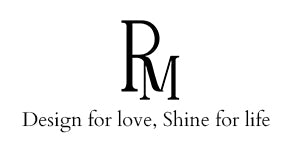What is the Best Quality Citrine Gemstone?
Citrine is a popular and attractive variety of quartz, cherished for its vibrant colors that range from sunny yellow to a warm, brownish-orange. As one of the most affordable and accessible gemstones, it is a favorite choice for a wide array of jewelry.
When purchasing citrine, it is crucial to understand the quality factors that determine its value and beauty. An informed buyer can better appreciate the nuances of color, clarity, and cut that distinguish an exceptional stone from a mediocre one. This knowledge ensures you can confidently select a high-quality piece that meets both your aesthetic preferences and budget.
|
Quick Takeaways: l The best quality citrine gemstones have a saturated golden to reddish-orange color, are eye-clean with no visible flaws, and are expertly cut to enhance brilliance. l Citrine jewelry is versatile and affordable, pairing well with all gold tones, but should be protected from prolonged sunlight and cleaned gently to maintain its vibrancy. |
Understanding Citrine: Background and Characteristics
Natural Origin and Common Sources
Geologically, citrine gemstone crystallizes in igneous or hydrothermal veins when iron-bearing quartz is exposed to a certain temperature range during formation or any metamorphic heating. Large producers are Rio Grande do Sul and Minas Gerais in Brazil, the Anahí deposit in Bolivia, Madagascar, minor amounts in the Ural Mountains in Russia, and a few areas in the US.
Color Range
Gemologists label the palette as pale lemon, canary yellow, honey, amber, smoky brown, and the deep reddish‑orange “Madeira” tones. Lighter pastel crystals are natural. Yet, vivid orange‑red stones are the products of controlled heating of pale amethyst. So, color cannot confirm origin.
Key Quality Factors of Citrine Gemstones
- Color: When a citrine gemstone shows a saturated golden to reddish‑orange tone free of brown, collectors rate it highest. Pale yellows or stones with smoky tints scale lower.
- Clarity: Citrine is eye‑clean, so any visible feathers or color zoning dents its grade. Look at the stone face‑up. If haze or needles break the light, it signals lower quality.
- Cut: Quartz’s toughness lets cutters use almost any shape, including but not limited to standard rounds and fancy checkerboard cushions that boost sparkle. A precise cut also masks pale areas while reflecting light back through the richest color zones.
- Carat Weight: Large rough is common, so the price rises gently with size until the stone gets very big. Because quartz forms large crystals, even a twenty‑carat citrine gemstone is affordable unless it combines size with top color and an eye‑clean face.
- Origin: Most stones come from Brazil’s Rio Grande do Sul. Vivid but scarcer material is mined in Uruguay, Madagascar, and Zambia. True natural yellow quartz is rare, so many gems start as pale amethyst that miners heat near the source to deepen the hue.

Citrine Gemstone Jewelry: Popular Styles and Settings
Popular Styles and Settings
Engagement citrine rings are in vogue. Here, the gemstone shows up in solitaire, halo, and bezel designs that balance sparkle with daily durability. Many recommend bezel mounts because the continuous metal rim guards the quartz’s edges. Outside bridal jewelry, oversized cocktail rings and bold pendants use the stone’s warm yellow‑orange tone for instant statement pieces.
Gold Pairings
The same citrine gemstone teams well with every gold hue. E.g., yellow gold deepens its honey color, white gold gives a crunchy contrast, and rose gold adds a gentle blush. What’s more, designers note that this flexibility empowers you to stack mixed metals without clashing. Hence, yellow, white, and rose gold citrine pieces sit side‑by‑side in present collections.
Caring for Your Citrine Gemstone
Cleaning Tips
Warm water with a drop of mild dish soap is all you need to keep a citrine gemstone bright. Lightly sweep the stone using a soft toothbrush, rinse thoroughly, and dry off using a lint-free cloth. Avoid ultrasonic cleaners, harsh chemicals, and wearing of lotions and other perfumes until the piece is on again. Undoubtedly, this prevents the film from dulling the surface.
Storage Recommendations
Sunlight or high heat can fade a citrine gemstone, so rest it in a cool, shaded drawer or box. Give the gem its own soft pouch or fabric‑lined slot so harder stones can’t scratch its surface. Add a silica‑gel packet or choose a low‑humidity spot to keep moisture and tarnish away.

Conclusion
Embrace the radiant elegance of citrine rings from Romalar Jewelry, where each piece is meticulously crafted to capture the vibrant warmth of this stunning November birthstone. Offering a rich selection of exquisite designs in rose, yellow, and white gold, Romalar blends timeless charm with modern sophistication to create rings perfect for every special occasion. With free delivery (over $200) and exceptional quality, now is the ideal time to invest in a meaningful gift or a dazzling treat for yourself. Discover the brilliance of Citrine and let Romalar illuminate your jewelry collection today!


